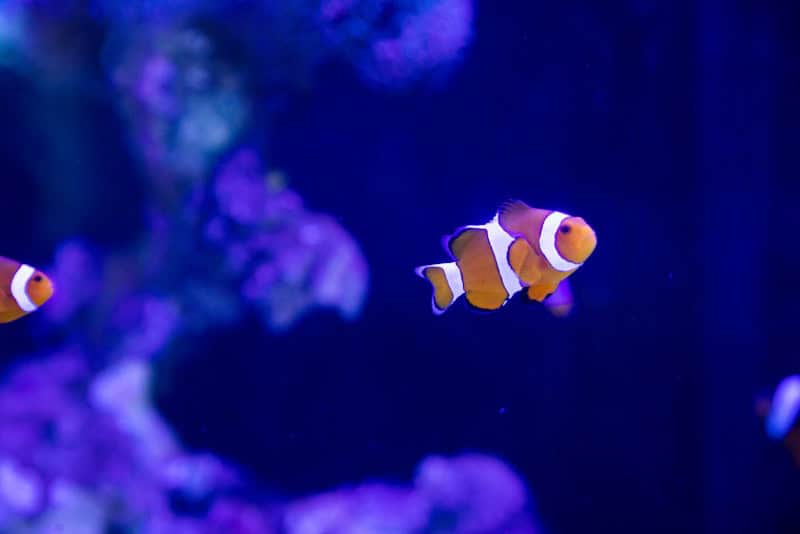
Mangroves might not be the first thing that comes to mind when setting up an aquarium, but these incredible plants offer a range of benefits that can truly enhance the aquatic environment. From improving water quality to adding natural beauty, mangroves are a must-consider addition for any tank.
Here are ten reasons why adding mangroves to an aquarium is an excellent choice.
1. Natural Water Filtration
The Power of Mangrove Roots
Mangrove roots act as a natural filter, removing excess nutrients and impurities from the water. This process helps maintain a healthier environment for fish and other aquatic life.
Good vs Bad Filtration
✅ Good: Mangroves actively absorb nutrients like nitrates and phosphates, reducing algae growth and keeping water clean.
❌ Bad: Relying solely on mechanical filters without natural filtration can lead to imbalanced water conditions and more frequent cleaning.
The natural filtration provided by mangroves often results in clearer, healthier water, reducing the need for excessive maintenance.
2. Enhanced Oxygenation
How Mangroves Improve Oxygen Levels
Mangroves contribute to oxygenation through their leaves and roots. This added oxygen benefits both fish and beneficial bacteria in the aquarium.
Pros vs Cons of Oxygenation
✅ Pros: Increased oxygen levels support healthier fish and improve the efficiency of beneficial bacteria.
❌ Cons: Without sufficient oxygenation, fish may become stressed, and beneficial bacteria may not function optimally.
Proper oxygenation is essential for maintaining a balanced and thriving aquarium ecosystem.
3. Aesthetic Appeal
The Visual Impact of Mangroves
Mangroves add a unique, natural look to an aquarium, enhancing its visual appeal. Their intricate root structures and lush foliage create an interesting focal point.
Good vs Bad Aesthetics
✅ Good: Mangroves provide a natural, visually appealing environment that mimics coastal habitats.
❌ Bad: Aquariums without such natural elements can appear plain and less engaging.
Incorporating mangroves can make an aquarium stand out, offering both beauty and functionality.
4. Habitat Creation
Creating Shelter for Aquatic Life
Mangroves offer shelter and hiding spots for fish and invertebrates, creating a more dynamic and natural habitat. This can reduce stress and encourage natural behaviors.
Pros vs Cons of Habitat Creation
✅ Pros: Providing hiding spots and shelter can improve the well-being of fish and invertebrates.
❌ Cons: Lack of natural habitat features can lead to increased stress and less natural behavior among aquarium inhabitants.
Mangroves help create a more enriched environment, supporting the overall health of the tank’s residents.
🛑 For more information on creating an ideal habitat, check out Top Care Tips for Adding Red Mangroves to an Aquarium.
5. Erosion Control
Mangroves and Coastal Protection
In their natural environment, mangroves play a crucial role in stabilizing soil and preventing erosion. While this may seem less relevant in a tank, it’s a great reminder of their natural benefits.
Good vs Bad Erosion Control
✅ Good: Mangroves’ root systems help anchor the substrate, which can be a fun educational point about their role in coastal ecosystems.
❌ Bad: Without plants like mangroves, aquarium substrates may shift more easily, especially in moving water.
Understanding the role of mangroves in natural erosion control can deepen appreciation for their functionality.
6. Lower Algae Growth
How Mangroves Combat Algae
Mangroves absorb excess nutrients that algae thrive on. By reducing nutrient levels, they help limit algae growth, leading to a cleaner and healthier tank.
Pros vs Cons of Algae Control
✅ Pros: Reduced nutrient levels help keep algae growth under control, minimizing the need for algae scrapers.
❌ Cons: Without plants like mangroves, algae can proliferate quickly, leading to frequent maintenance.
Effective algae control through mangroves helps maintain a visually appealing and low-maintenance aquarium.
7. Educational Value
Learning from Mangroves
Mangroves offer a fantastic opportunity to learn about marine ecosystems and the importance of these plants in coastal environments. Their unique characteristics provide educational insights into how they contribute to environmental health.
Good vs Bad Educational Value
✅ Good: Observing mangrove growth and behavior in an aquarium provides valuable lessons about coastal ecosystems and plant biology.
❌ Bad: Aquariums without such educational elements may lack opportunities for learning and engagement.
Mangroves make a great addition for anyone interested in learning more about marine and coastal environments.
8. Natural Water Filtration
Mangroves as Natural Filters
Mangroves excel at removing pollutants and excess nutrients from the water. This natural filtration process improves water quality and reduces the need for additional chemical treatments.
Good vs Bad Filtration
✅ Good: The natural filtration provided by mangroves enhances water quality and supports a healthier aquatic environment.
❌ Bad: Relying solely on mechanical filters without the benefits of natural filtration can lead to less efficient water management.
Utilizing mangroves for natural filtration offers a more balanced and sustainable approach to aquarium care.
9. Reduced Maintenance
Less Work with Mangroves
Because mangroves help manage nutrient levels and reduce algae, they can simplify aquarium maintenance. With proper care, they contribute to a more balanced and less demanding tank environment.
Pros vs Cons of Maintenance
✅ Pros: Reduced algae growth and improved water quality mean less frequent cleaning and maintenance tasks.
❌ Cons: Without mangroves, more effort is required to manage algae and maintain water quality.
Mangroves can make aquarium care easier and more efficient, saving time and effort.
10. Unique Biotope
Creating a Biotope
Adding mangroves helps create a unique biotope that closely resembles coastal habitats. This setup provides an authentic and stimulating environment for both plants and aquatic life.
Good vs Bad Biotope Creation
✅ Good: A biotope with mangroves offers a realistic and engaging environment that mimics natural habitats.
❌ Bad: Without such elements, the tank may lack the depth and diversity of a natural biotope.
Creating a mangrove biotope adds authenticity and enriches the aquarium experience.
Incorporating mangroves into an aquarium offers numerous benefits, from natural filtration and enhanced oxygenation to improved aesthetics and reduced maintenance. Their unique contributions create a more balanced and engaging environment for both aquatic life and enthusiasts.
How Do I Choose My Very First Plant?
So you have learned about the incredible benefits of adding mangrove plants to your tank, but you still don’t know which exact plant to add to your specific tank size?
Don’t worry, because we’ve created an easy Step-by-Step guide to help you with your selection process.
Click the button below to find out which plant is perfect for your aquarium.

 Cart is empty
Cart is empty 
